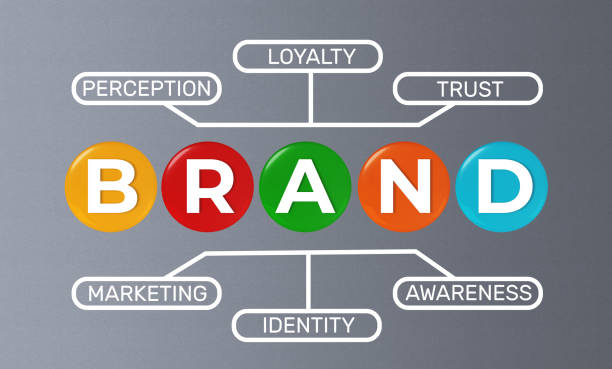Have you ever wondered what makes some brands instantly recognizable? Why do certain logos, colors, or images spark specific emotions and memories? Also, crafting a unique brand voice through visual design can be the key to standing out in today’s crowded marketplace. Additionally, from the color palette you choose to the fonts you use, each element builds an unmistakable brand presence, guiding how your customers feel and think about your business. So, how do you start? So, let’s dive into how to develop a visual identity that speaks directly to your audience.
Why Visual Design is Essential to Brand Voice
Visual design doesn’t just look good; it communicates who you are, what you believe in, and what customers can expect. Additionally, it’s the silent language that communicates your brand’s personality, values, and tone. So, consider some iconic brands—Coca-Cola’s timeless red or Apple’s sleek, minimalist aesthetic—each communicates a clear, recognizable brand voice without saying a word. Also, for your brand, a unique voice developed through visual design can establish credibility, build trust, and inspire loyalty.
Step 1: Identify Your Brand’s Core Values
Your brand voice begins with understanding the values that your brand stands for. So, are you innovative, traditional, playful, or authoritative? Also, determining these foundational traits will inform your entire visual identity, influencing choices in colors, fonts, imagery, and even spacing.
- Define Key Attributes: Start by listing the top five qualities you want people to associate with your brand.
- Research Competitors: Look at the visual designs of competitors and note how their designs reflect their brand values.
- Stay True to Your Vision: Avoid trends that conflict with your brand’s identity; staying authentic is essential for long-term success.
Step 2: Choose a Color Palette that Speaks – Brand Voice
Color is one of the most immediate ways to establish a visual brand voice. Additionally, each color evokes certain emotions, and a well-thought-out palette can make your brand memorable and distinctive.
- Understand Color Psychology: For instance, blue often represents trust and stability, while red conveys passion and urgency. So, select colors that represent your brand values.
- Consider a Primary and Secondary Palette: Your primary palette will appear in most of your visuals, while secondary colors can add contrast and variety without overpowering your core colors.
- Stay Consistent Across Platforms: To solidify brand recognition, use the same colors on all digital and print platforms.
Step 3: Select Fonts that Reflect Your Voice
Typography plays an often underestimated role in brand voice. Just as words convey tone, fonts do too. A bold, modern sans-serif font can convey confidence and clarity, while a delicate, serif typeface may express elegance and sophistication.
- Choose a Readable, Scalable Font: Your primary font should be legible on screens of all sizes. Also, test it on different devices to ensure readability.
- Establish a Font Hierarchy: Select a primary font for headers and a secondary one for body text to maintain consistency.
- Match Font Style to Tone: If your brand is playful, consider a font with rounded, whimsical shapes. So, for a professional brand, opt for clean and sleek typography.
Step 4: Design a Logo that Captures Your Essence – Brand Voice
A logo is often the cornerstone of a brand’s visual identity. Also, it should encapsulate your brand’s voice in a single, memorable image. Additionally, think about the simplicity of Nike’s swoosh or the classic design of Mercedes-Benz’s star logo.
- Focus on Simplicity and Scalability: A logo should be easily recognizable and work well on various backgrounds and sizes.
- Ensure It Reflects Your Brand’s Character: Every aspect of the logo, from color to shape, should resonate with your brand values.
- Iterate and Test: Get feedback from different people to see how they interpret your logo. So, it should evoke the intended feeling consistently.

Step 5: Use Imagery That Tells Your Story
Images create powerful associations and can make your brand feel more approachable. Whether you use photos, illustrations, or icons, ensure that every image adds value to your narrative.
- Be Intentional with Visual Style: Consider whether your brand would benefit more from polished, professional images or casual, authentic snapshots.
- Maintain Image Quality Across Platforms: Always use high-resolution images that adapt well to different screen sizes.
- Add Meaningful Visuals: Choose images that align with your brand message—like happy customers for a service-oriented brand or creative visuals for a design-focused business.
Step 6: Define Consistent Layouts and Composition – Brand Voice
A consistent layout can reinforce brand familiarity and make your content easy to digest. Additionally, consider how Apple maintains a minimalist look across all digital and print materials.
- Create a Grid Structure: Layout grids help achieve a balanced, organized look across your marketing materials.
- Maintain Spacing Consistency: Define margins and spacing to create a sense of uniformity.
- Optimize for Mobile and Desktop Views: Ensure your design layouts are adaptive, giving a seamless experience across devices.
Step 7: Develop and Use Brand Guidelines
Brand guidelines are a playbook for your visual voice. Additionally, they detail everything from color codes to font choices and ensure consistency in all brand communications.
- Outline Do’s and Don’ts: Include specific instructions on using logos, colors, and fonts to avoid misrepresentation.
- Provide Visual Examples: Show examples of approved layouts, photo styles, and spacing to create clarity.
- Update Guidelines as Needed: Brands evolve, and so should their guidelines. Additionally, regularly review to see if your guidelines need adjustments to reflect new brand directions.
Step 8: Leverage Visual Design on Social Media – Brand Voice
Social media is where your brand voice reaches the most audience. So, each post, story, and ad should carry your brand’s visual signature.
- Use Branded Templates: Create templates that make your posts instantly recognizable.
- Maintain a Consistent Aesthetic: From filters to color schemes, ensure every social media post aligns with your visual brand identity.
- Adapt to Each Platform’s Style: While consistency is important, adapt your visual elements to the unique tone of each platform (e.g., professional for LinkedIn, vibrant for Instagram).
Step 9: Test, Analyze, and Adjust
Your visual brand voice will benefit from regular assessment. Also, testing allows you to understand what resonates most with your audience.
- Track Engagement Metrics: Look at how different visual elements impact engagement.
- Conduct A/B Testing: Experiment with different designs and measure which ones perform better.
- Stay Open to Refinement: Visual branding is a dynamic process. So, don’t be afraid to refresh your visuals to keep your brand voice strong and relevant.

Conclusion: Brand Voice
Creating a unique brand voice through visual design is an investment in long-term brand identity. Additionally, each choice, from colors to imagery, contributes to a cohesive experience that communicates who you are and why you matter to your audience. By following these steps, you can shape a visual brand identity that not only captures attention but also builds lasting connections. So, are you ready to craft a brand voice that truly resonates?
Lastly, visual design doesn’t just enhance your brand—it becomes your brand’s voice, reaching customers in a way words alone cannot. So, start crafting today, and watch your brand come to life in a whole new way.








